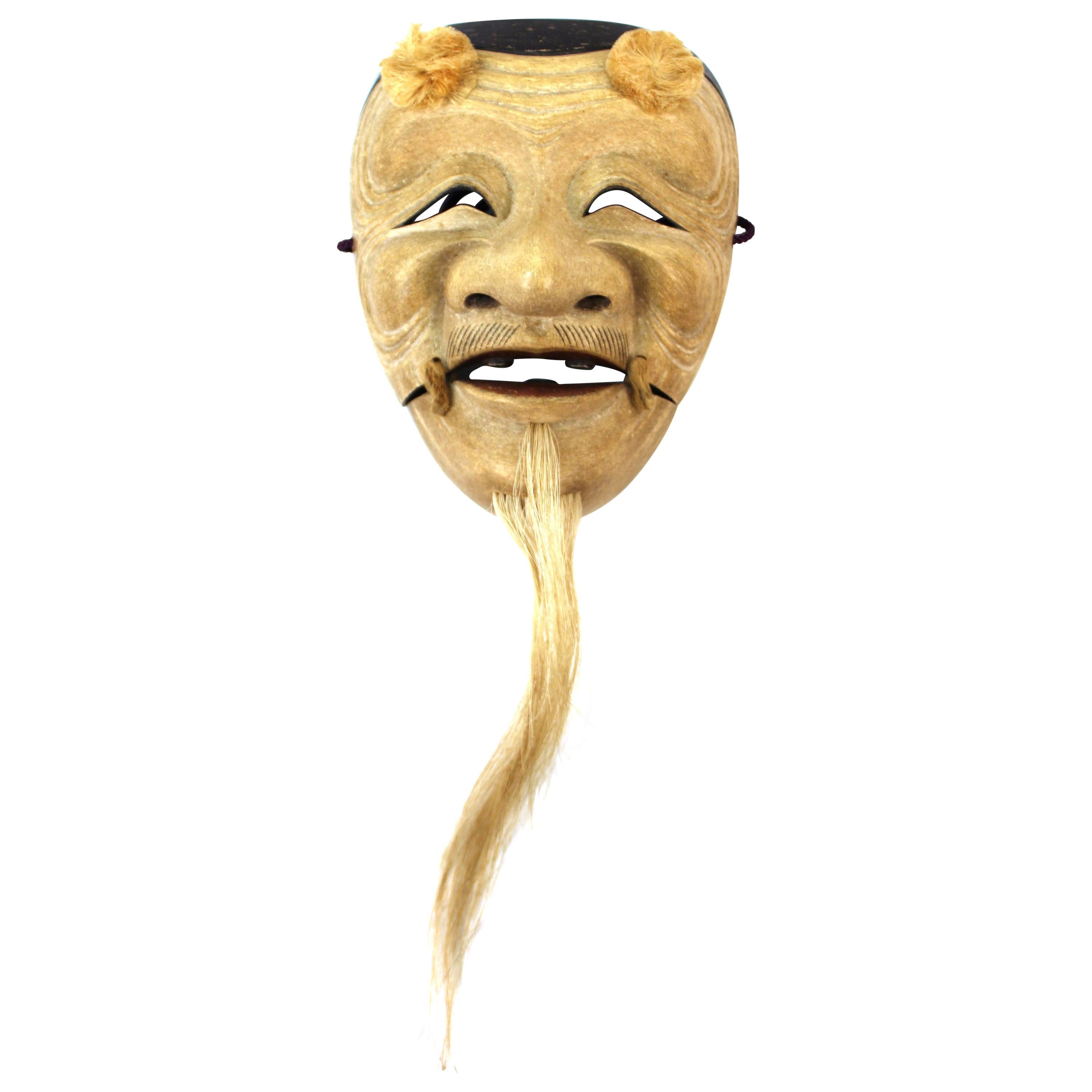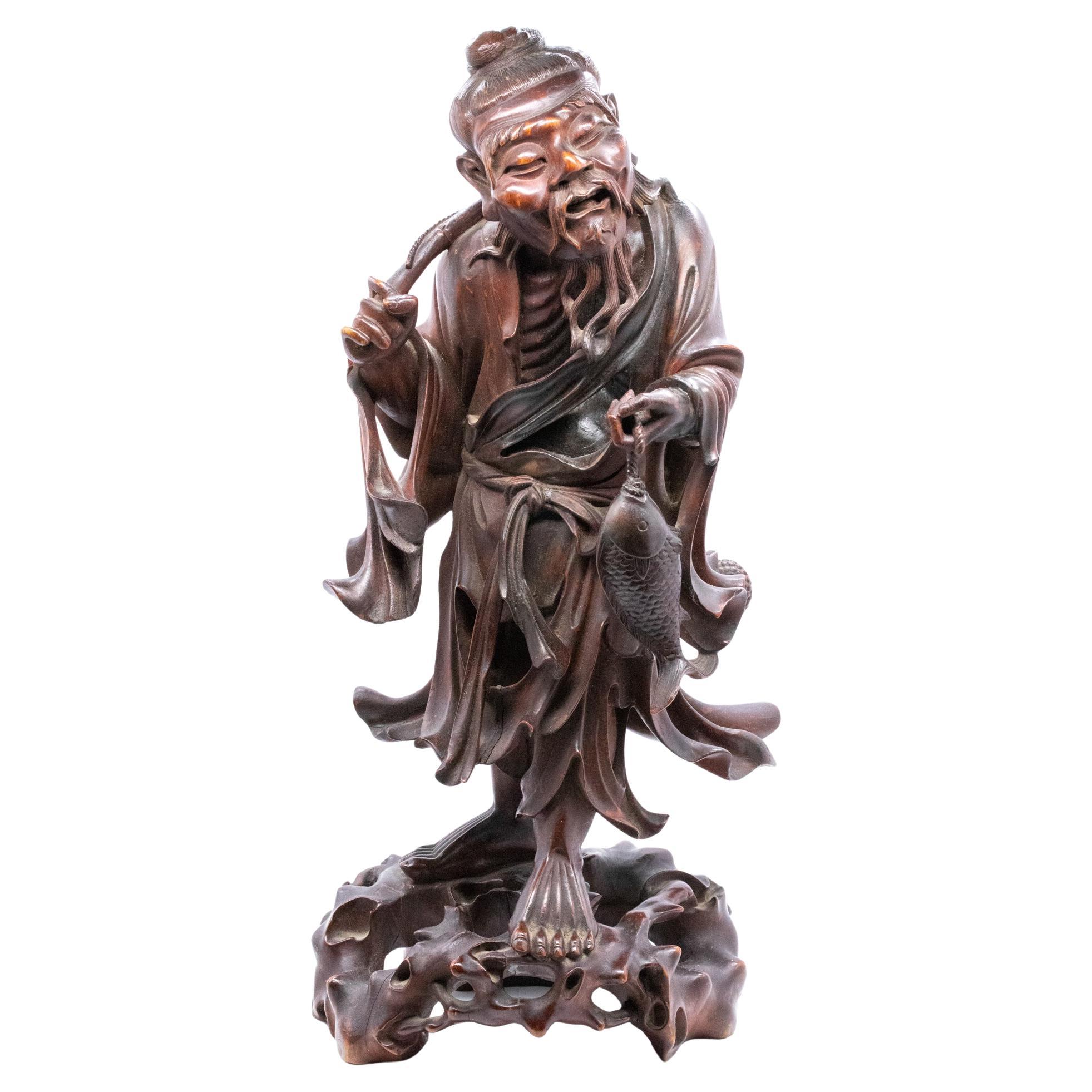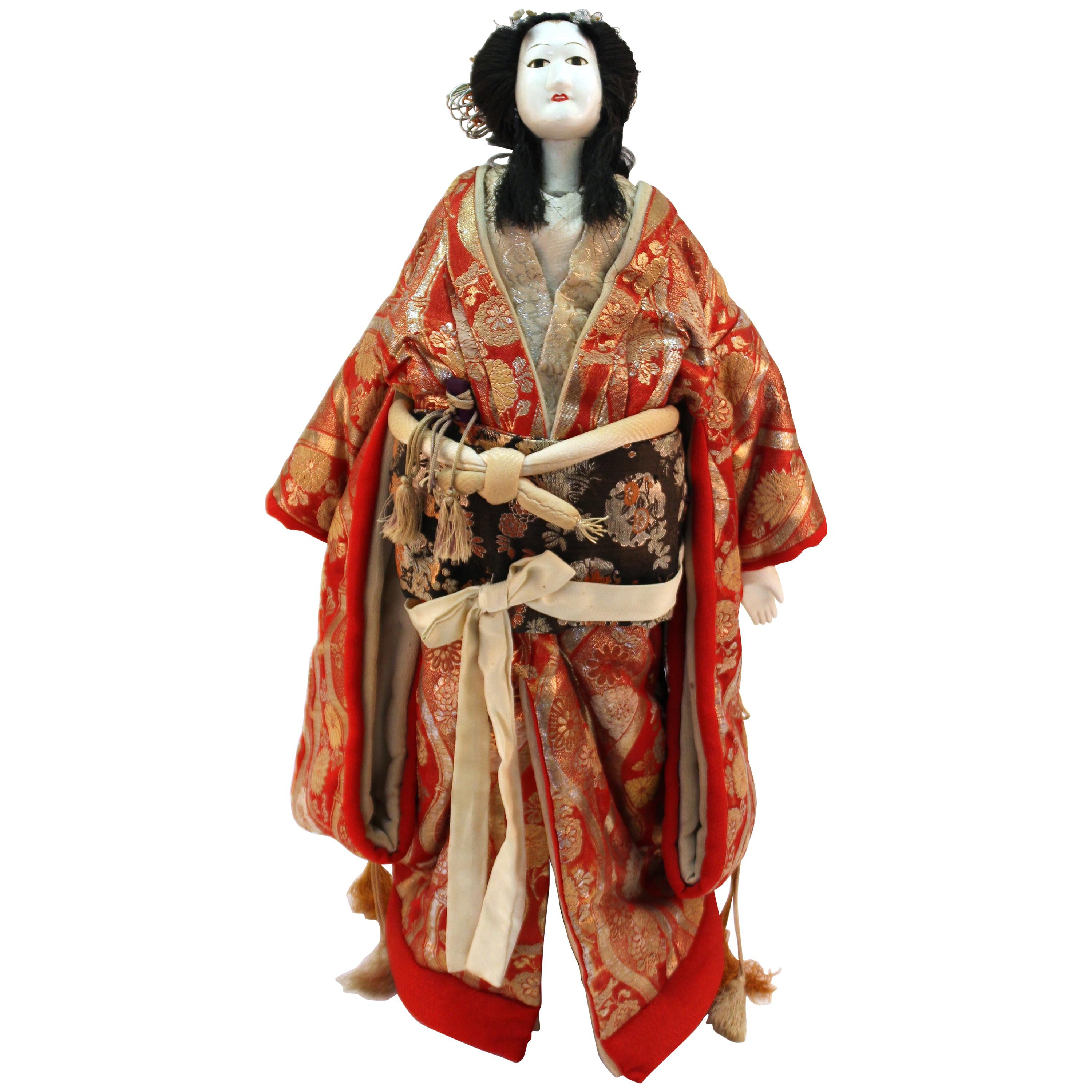Items Similar to Japanese Meiji Noh Mask in Carved Wood
Want more images or videos?
Request additional images or videos from the seller
1 of 11
Japanese Meiji Noh Mask in Carved Wood
About the Item
Japanese early Meiji period Noh theater mask made of carved wood with gofun layers. The piece was made in Japan in circa 1880 and is signed on the back. In great antique condition with age-appropriate wear and use.
- Dimensions:Height: 8 in (20.32 cm)Width: 5.5 in (13.97 cm)Depth: 3 in (7.62 cm)
- Style:Meiji (Of the Period)
- Materials and Techniques:
- Place of Origin:
- Period:
- Date of Manufacture:circa 1880
- Condition:Wear consistent with age and use.
- Seller Location:New York, NY
- Reference Number:
About the Seller
4.9
Vetted Seller
These experienced sellers undergo a comprehensive evaluation by our team of in-house experts.
1stDibs seller since 2010
2,430 sales on 1stDibs
Typical response time: 2 hours
- ShippingRetrieving quote...Ships From: New York, NY
- Return PolicyThis item cannot be returned.
More From This SellerView All
- Japanese Meiji Noh Mask of OkinaLocated in New York, NYJapanese carved wood Noh mask depicting Okina. The piece was made during the late Edo - early Meiji period in the 19th century. The mask is of an older man wi...Category
Antique 19th Century Japanese Meiji Sculptures and Carvings
MaterialsWood
- Japanese Edo Carved Wood Fox Mask with Articulated JawLocated in New York, NYJapanese Edo period carved wood theatrical animal mask of a fox, with articulated jaw. The piece has a detailed expressive face and was carved d...Category
Antique 18th Century Japanese Edo Sculptures and Carvings
MaterialsWood
- Japanese Meiji Bunraku Ningyo PuppetLocated in New York, NYJapanese Meiji period puppet for the traditional Bunraku ningyo joruri puppet theater. The piece has a carved wood head and is adorned with richly detai...Category
Antique Early 1900s Japanese Meiji Sculptures and Carvings
MaterialsTextile, Wood
- Japanese Edo Period Carved Wood Mask of Man with Golden BeardLocated in New York, NYJapanese Edo period carved wood mask of a man with a golden hair beard. The piece shows a very expressive face and was likely made during the 19...Category
Antique 19th Century Japanese Edo Sculptures and Carvings
MaterialsWood
- Japanese Edo Period Carved Wood Mask of Old Man Ko-JoLocated in New York, NYJapanese Edo period carved wood mask depicting Ko-Jo, an old man. The piece dates to circa 1820 and is in great condition. 15 inches long with t...Category
Antique 1820s Japanese Edo Sculptures and Carvings
MaterialsWood
- Japanese Edo Period Lion MaskLocated in New York, NYA rare Edo period (17th century-18th century) Japanese lion mask for the Gion Festival. This mask was part of a two-man costume, with one man holding the mask and the other at the back covered with fabric to perform the traditional Lion Dance...Category
Antique 17th Century Japanese Edo Sculptures and Carvings
MaterialsWood
You May Also Like
- Noh Edo Period Lion MaskLocated in Pasadena, CAThis a well-preserved lion mask that dates to the 18th century (possibly earlier). Lion masks were used in the traditional Gion Matsuri festival lion dances...Category
Antique Early 18th Century Japanese Edo Sculptures and Carvings
MaterialsWood
- Japanese Edo Period Noh Theater Mask with Red, Black and Golden PatinaLocated in Yonkers, NYA Japanese Edo period "Noh" theater mask from the 17th to 19th century. Created in Japan during the Edo period (1603-1868), this mask captures our attention with its striking expression and contrasting colors. Noh, a form of theater involving music, dance and drama and originating in the 14th century, uses...Category
Antique 19th Century Japanese Edo Sculptures and Carvings
MaterialsWood
- Japan 1890 Meiji Period Ebisu Sculpture in Wood Carving of an Old FishermanLocated in Miami, FLAn extremely well detailed wood carving of Ebisu, as a fisherman. Beautiful and well detailed sculpture, created in Japan during the Meiji dynastic period (1868-1912) back in the 1890's. This piece represent the god of good fortune Ebisu. Was exceptionally carved and executed from one solid single piece of rose wood, showing a gorgeous face expression, with intricate details in the hands and feets, he's carrying as usual a rod and a fish. Ebisu (yebisu), ???, god of fortune, the ocean and fisherman. In the japanese mythology is one of the seven gods of luck, sichi-fuku-jin, the patron of the fisherman and tradesmen. he is depicted as a bearded, smiling fisherman with formal long court ropes, often carrying a rod in one hand and a tai, symbolic fish of the good luck, in the other. The height is 14.25 inches (36.20 cm) and the base measurements is 6.5 by 6.45 inches (16.5 x 16.38 cm). Meiji period, is an era of Japanese history that extended from October 23, 1868 to July 30, 1912.The Meiji era was the first half of the Empire of Japan, when the Japanese people moved from being an isolated feudal society at risk of colonization by Western powers to the new paradigm of a modern, industrialized nation state and emergent great power, influenced by Western scientific, technological, philosophical, political, legal, and aesthetic ideas. As a result of such wholesale adoption of radically different ideas, the changes to Japan were profound, and affected its social structure, internal politics, economy, military, and foreign...Category
Antique 1890s Japanese Meiji Sculptures and Carvings
MaterialsWood
- Tenjin-Sama, Wood, Japanese Shinto Deity of Learning and Wisdom, Meiji PeriodLocated in Point Richmond, CATenjin-Sama, Shinto Deity of Learning and Wisdom, Meiji Period Tenjin,-Sama, Deification of Sugawara no Michizane, was a famous scholar, poet and politician of the Heian period. In...Category
Antique Late 19th Century Japanese Meiji Sculptures and Carvings
MaterialsWood
- Japanese Okame Ko-Omote Wood Carved Noh Theater MaskLocated in Studio City, CAA beautiful, wonderfully crafted, alluring mask made for Japanese Noh theatre. This mask is handcrafted and carved from natural wood. Ko-omote translates as "little mask" or sometimes "small face." This particular delicate featured mask (her red lips really stand out) is used for main and sometimes secondary roles when the character is a young girl or, in some cases, a supernatural being. What is also interesting about this mask is the blackened teeth which centuries ago, was customary for Japanese women to paint their teeth black after they became married. We believe this mask dates from the mid-to early Showa period, perhaps Mejia. The mask was acquired from an antique mask...Category
Mid-20th Century Japanese Showa Sculptures and Carvings
MaterialsWood
- Meiji Period Red and Black Painted Kimono Storage Box, JapanLocated in Point Richmond, CAJapanese Kimono storage box, constructed of wood and bamboo, painted black with family crest painted in red on the sides. The top has wood slats, which ...Category
20th Century Japanese Meiji Sculptures and Carvings
MaterialsWood
Recently Viewed
View AllMore Ways To Browse
Antique Carved Wood
Antique Carved Wood Furniture
Antique Wood Carved Furniture
Carved Wood Antique Furniture
Furniture In Japan
Made In Japan
Wood Carved Art
Antique In Japanese
Period Carved Wood
Carved Wood Sign
Japanesed Carved Wood
Antique Japanese Carved Furniture
Carved Japanese Wood Furniture
Japan Sculpture Carved
Antique Japanese Carved
Asian Sculptures Carved Wood
Antique Carved Japanese Furniture
Antique Asian Wood Carving





